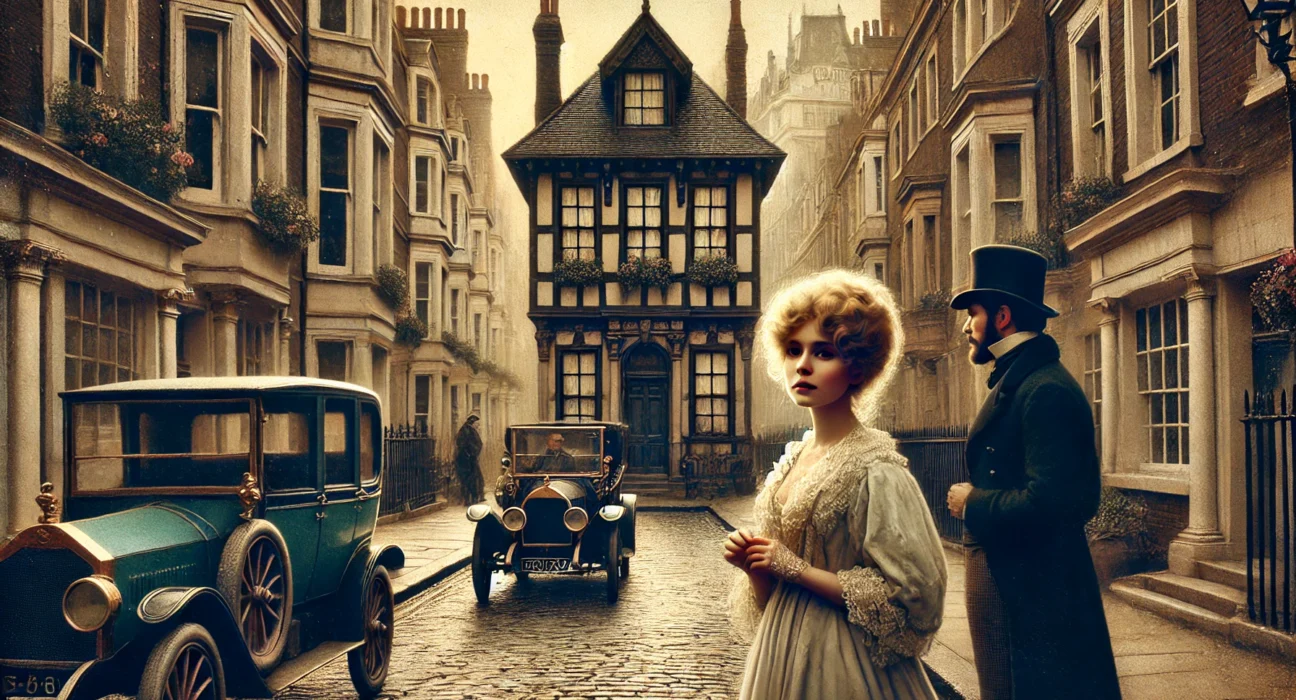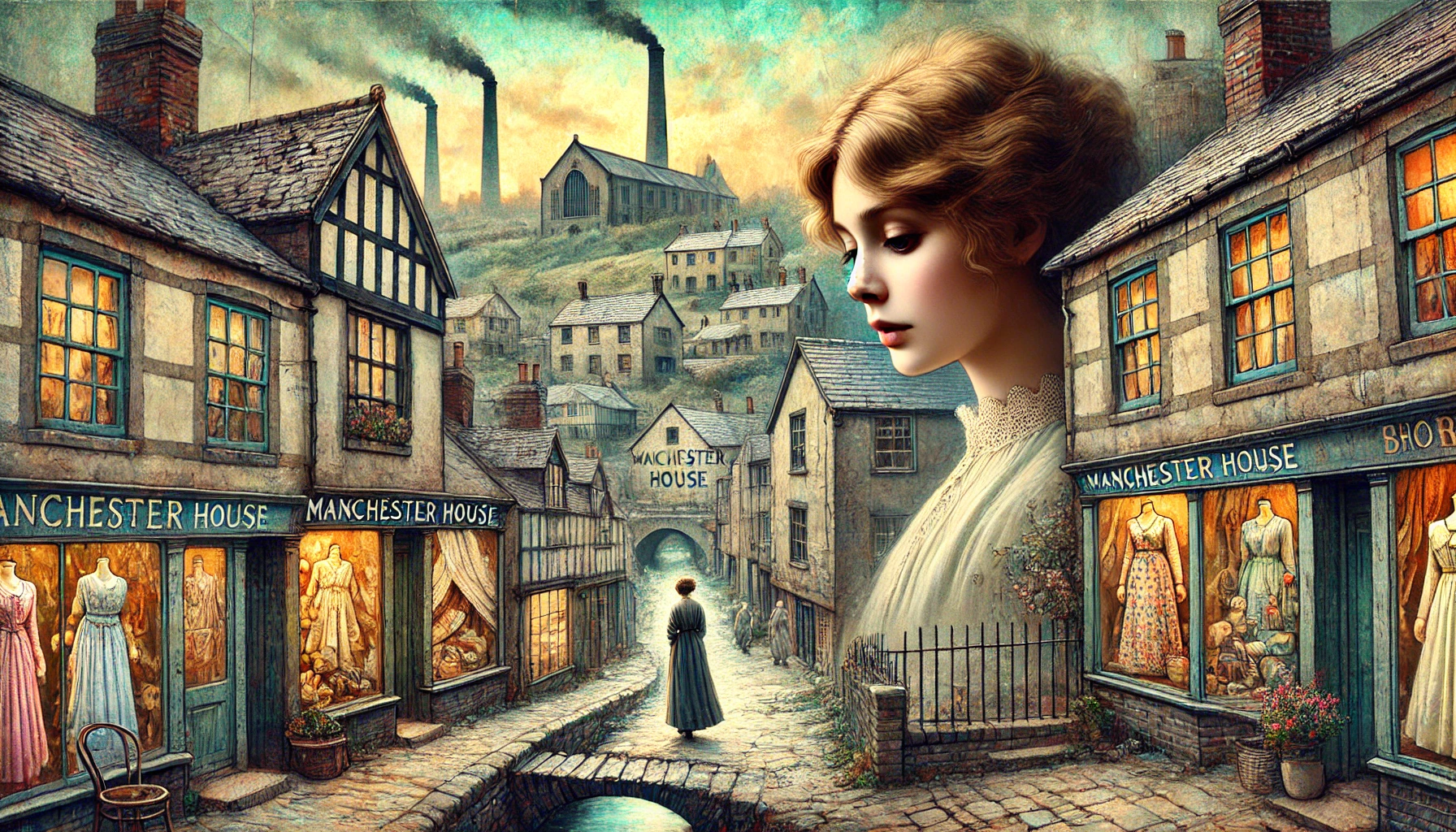“The Head of the House of Coombe” by Frances Hodgson Burnett, best known for her beloved children’s books like The Secret Garden, is a multifaceted adult novel set in early 20th century London. Published in 1922, it explores the lives of the British upper class during the twilight of the Edwardian era, before the devastation of World War I. The novel follows Feather Gareth-Lawless and her daughter Robin, and weaves a complex narrative of societal expectations, wealth, manipulation, and the consequences of neglecting emotional bonds.
Plot Summary
In the heart of London, a young woman named Feather Gareth-Lawless drifts through life, her name a reflection of her light and insubstantial nature. Born Amabel Darrel, she was the prettiest daughter in a large, impoverished family, and her beauty was her only asset. By chance, she married Robert Gareth-Lawless, a handsome, irresponsible man who, despite his aristocratic connections, had no real wealth. Feather, entranced by London’s glamorous social life, spent her days surrounded by expensive clothes, parties, and frivolous pursuits. Her superficial charm earned her the admiration of many, but beneath it all, she had little regard for deeper responsibilities—especially motherhood. Her daughter, Robin, is born into a household where love is an afterthought, her existence barely acknowledged by her mother.
Robin grows up in a dingy nursery, under the care of indifferent nurses, while Feather remains engrossed in her social world. The child watches life pass through the window, gazing at the fashionable world outside, one to which she does not belong. Robin’s early years are marked by a strange, growing sense of anger towards a man she doesn’t know, a man who regularly visits her mother but takes no apparent notice of her: the Head of the House of Coombe.
The Head of the House of Coombe is the Marquis of Coombe, a man whose reputation is one of elegant detachment. His life is a study in refinement, with wealth and power allowing him to move through the upper echelons of society with ease. His manner is cold, almost cynical, yet beneath it lies a mind keenly observant of the shifting world around him. Coombe has long been a visitor in Feather’s life, drawn not by love, but by curiosity and, perhaps, amusement at her sheer superficiality. He watches her frivolous existence from a distance, sometimes intervening when it suits him. Feather believes he is infatuated with her, mistaking his bemused attentions for admiration. In truth, Coombe is interested not in Feather, but in the unfolding drama of her life.
Robert Gareth-Lawless’s financial recklessness catches up with him, and when he dies suddenly, Feather is left with no means to support her lifestyle. London society moves quickly, and sympathy is in short supply for the beautiful widow. Feather, who has never known how to manage anything other than her social calendar, finds herself facing a crisis. Her husband’s death also means that Robin, now a child of about six years, becomes an even greater inconvenience. Feather’s attempts to maintain her place in society falter as creditors come knocking and her household falls apart. Servants leave, unpaid and disgruntled, and soon Feather finds herself alone with Robin, with no one to care for either of them.
As her world collapses, Feather’s beauty, which had once been her greatest weapon, begins to fade in the eyes of those around her. Desperate, she turns to the only person left who might help her—Coombe. Though he is not overtly cruel, Coombe’s reaction to Feather’s pleas for assistance is one of cold practicality. He recognizes the futility of trying to rescue her from her own shallow existence, but he also sees something in Robin that gives him pause. The girl, neglected and emotionally starved, stirs an unexpected sense of responsibility in him. Though Feather cannot comprehend it, Coombe begins to take a protective interest in the child’s future.
Robin’s childhood is marked by isolation, both from her mother and the outside world. Feather, indifferent to her daughter’s needs, leaves her to the care of nannies and strangers. Yet, through Coombe’s quiet intervention, Robin is kept from complete abandonment. He ensures that she is educated and cared for, though his methods remain distant and unemotional. As Robin grows, she becomes aware of the unusual relationship between her mother and Coombe, sensing the power he holds over both of their lives.
Time passes, and the world around them begins to change. The whispers of a coming war grow louder, and London society, once so sure of itself, begins to shift. Feather, now older and more desperate, clings to her fading beauty and status. She continues to live under the illusion that Coombe’s attention will save her, but his interests lie elsewhere. He watches as the old order begins to crumble, and in Robin, he sees a figure who might survive in the new world that is dawning. Though Robin has grown up with little affection, she is not as fragile as she seems. Coombe’s quiet influence shapes her, preparing her for a future that Feather will never understand.
The war finally arrives, and with it, the final dissolution of the world Feather has known. The glamour of London is replaced by uncertainty and fear, as families are torn apart, and social structures collapse. Feather, unable to adapt, falls further into obscurity, her once-adored beauty now a hollow memory. Coombe, ever the observer, remains in his place, watching as the pieces of his carefully constructed life rearrange themselves in the chaos of war. Robin, on the other hand, begins to emerge from the shadows of her upbringing, ready to step into the uncertain future.
In the end, Coombe’s influence over Robin is profound. Though his care is detached, it has shaped her into a young woman who can navigate the complexities of the world with a resilience her mother never possessed. Feather, for all her beauty and charm, has been left behind, a relic of a forgotten time. The Head of the House of Coombe, who began as a figure of distant authority, becomes the silent architect of Robin’s survival in a world that no longer values the frivolities that once defined her mother’s life.
Main Characters
Feather Gareth-Lawless (Amabel Darrel): Feather is a beautiful, superficial woman, preoccupied with her social standing and physical appearance. Light and frivolous, she floats through life, reliant on the generosity of men. As a mother, she is neglectful, leaving her daughter Robin in a cold, loveless environment.
Robin Gareth-Lawless: Robin is Feather’s daughter, often left to the care of nurses. She grows up in isolation, largely ignored by her mother and surrounded by a hollow, emotionally barren atmosphere. The Head of the House of Coombe takes an unusual interest in her, further complicating her emotional world.
The Head of the House of Coombe (Marquis of Coombe): A detached, aristocratic figure who is widely discussed in society. Known for his sophisticated, almost cynical view of life, he becomes a central figure in Feather’s life and later Robin’s, acting as a guardian of sorts. Despite his aloofness, he is not as heartless as he appears.
Robert Gareth-Lawless: Feather’s husband, whose financial irresponsibility and eventual death leave Feather and Robin penniless. His character sets the stage for Feather’s increasingly precarious lifestyle and dependence on the whims of her social circle.
Theme
Class and Society: The novel delves deeply into the structure of Edwardian high society, revealing the superficial nature of social status and the shifting power dynamics as the aristocracy faces decline.
Neglect and Emotional Detachment: Feather’s neglect of Robin and the emotional distance between them highlight the damaging effects of a lack of parental care and emotional engagement. The relationships in the novel often reflect coldness, manipulation, and detachment.
Power and Manipulation: The Head of the House of Coombe manipulates his position in society, playing a cold and calculating game. His interactions with Feather and Robin reflect power dynamics where social status and wealth allow manipulation of others’ lives with little consequence.
Transition and Change: Set against the backdrop of a world on the brink of war, the novel examines the slow crumbling of long-held societal structures. The characters, particularly Feather and Coombe, embody the old world’s resistance to change, even as the world transforms around them.
Writing Style and Tone
Burnett’s writing in The Head of the House of Coombe combines a rich narrative style with sharp social commentary. The tone shifts from light and whimsical—mirroring Feather’s character—to dark and foreboding, particularly in the sections where Robin’s emotional neglect becomes apparent. Burnett’s language is layered with irony, especially in her portrayal of the upper class’s emptiness and preoccupation with appearances. The narrative voice is somewhat detached, reflecting the emotional coldness of many of the characters, particularly the Marquis. Through detailed descriptions and introspective moments, Burnett paints a vivid picture of early 20th-century London society, both its glamour and its hollowness.
We hope this summary has sparked your interest and would appreciate you following Celsius 233 on social media:
There’s a treasure trove of other fascinating book summaries waiting for you. Check out our collection of stories that inspire, thrill, and provoke thought, just like this one by checking out the Book Shelf or the Library
Remember, while our summaries capture the essence, they can never replace the full experience of reading the book. If this summary intrigued you, consider diving into the complete story – buy the book and immerse yourself in the author’s original work.
If you want to request a book summary, click here.
When Saurabh is not working/watching football/reading books/traveling, you can reach him via Twitter/X, LinkedIn, or Threads
Restart reading!








